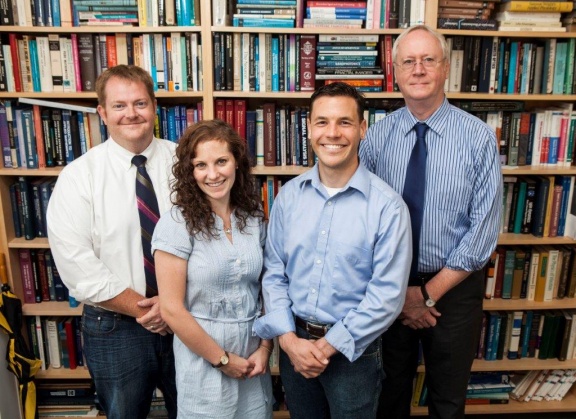Researchers in the Vanderbilt University Institute of Imaging Science (VUIIS) have achieved the first conclusive non-invasive measurement of neural signaling in the spinal cords of healthy human volunteers.
Their technique, described today in the journal eLife, may aid efforts to help patients recover from spinal cord injuries and other disorders affecting spinal cord function, including multiple sclerosis.
“We definitely hope that this work can be translated to address many neurological disorders,” said the paper’s first author, Robert Barry, Ph.D., a postdoctoral research fellow in the institute directed by senior author John Gore, Ph.D.
The researchers used ultra-high field functional magnetic resonance imaging (fMRI) to detect for the first time “resting state” signals between neural circuits in the human spinal column. These signals are continuously active, not in response to external stimuli.
“We see these background resting circuits as being inherent measures of function,” said Gore, the Hertha Ramsey Cress Professor of Medicine, University Professor and vice chair of Research in the Department of Radiology and Radiological Sciences.
The technique may be valuable for understanding how spinal cord injury changes the “functional connectivity” between neural circuits, for example, and for assessing and monitoring recovery that occurs spontaneously or following various interventions.
“The hope is that when you have impaired function that there will be changes (in the signals),” Gore said. “We’ve already got evidence for that from other studies.”
Studies of the “resting” brain reveal how neural circuits coordinate to control various functions and to produce different behaviors. The spinal cord has been more difficult to study because it is much smaller than the brain, and conventional fMRI isn’t sensitive enough to pick up its signals.
The Vanderbilt team overcame this challenge by using an fMRI scanner with a 7 Tesla magnet, multichannel spinal cord coils, and advanced methods for acquiring and analyzing the images. One Tesla is roughly 20,000 times the strength of the magnetic field of the earth.
Co-authors Seth Smith, Ph.D., assistant professor, and Adrienne Dula, Ph.D., research instructor, both in the Department of Radiology and Radiological Sciences, are applying advanced imaging methods to better understand human spinal cord diseases such as multiple sclerosis, while Barry has expertise in the acquisition and analysis of functional data.
Resting state functional connectivity in the human spinal cord
Barry et al. have used advances in fMRI technology to show that resting state functional connectivity does indeed exist in the spinal cord. Correlations were found in the resting levels of activity between spatially distinct areas of the cord, specifically between the ventral horns and between the dorsal horns. The ventral horns relay motor signals to the body, whilst the dorsal horns receive sensory signals from the body.
These findings also have clinical applications. Some patients with incomplete spinal cord injuries can recover near normal function, but the mechanisms responsible for this recovery are unclear because clinicians have not been able to probe neuronal connections in the spinal cord in a non-invasive manner. The work of Barry et al. should help with efforts to understand the neuronal changes that support recovery from spinal cord injury.
Brain imaging methods such as functional magnetic resonance imaging (fMRI) can provide us with a picture of what the brain is doing when a person is carrying out a specific task. For example, an fMRI scan recorded whilst someone is reading is likely to show activity in regions in the left hemisphere of the brain that are known to be involved in language comprehension. fMRI can also be used to measure patterns of neuronal activity when someone is awake but not engaged in a specific task. This approach, known as resting state fMRI, can be used to examine which regions of the resting brain are active at the same time. Researchers are interested in these patterns of brain activity because they reflect neural circuits that work together to produce different functions and behaviors.
Over 4000 papers have used resting state fMRI to study the human brain. However, to date there has been no conclusive investigation of resting state activity in the spinal cord. This is largely because the spinal cord is much smaller than the brain, and most fMRI scanners are not sensitive enough to study it in detail. Consequently, little is known about intrinsic neural circuits in the resting spinal cord.
